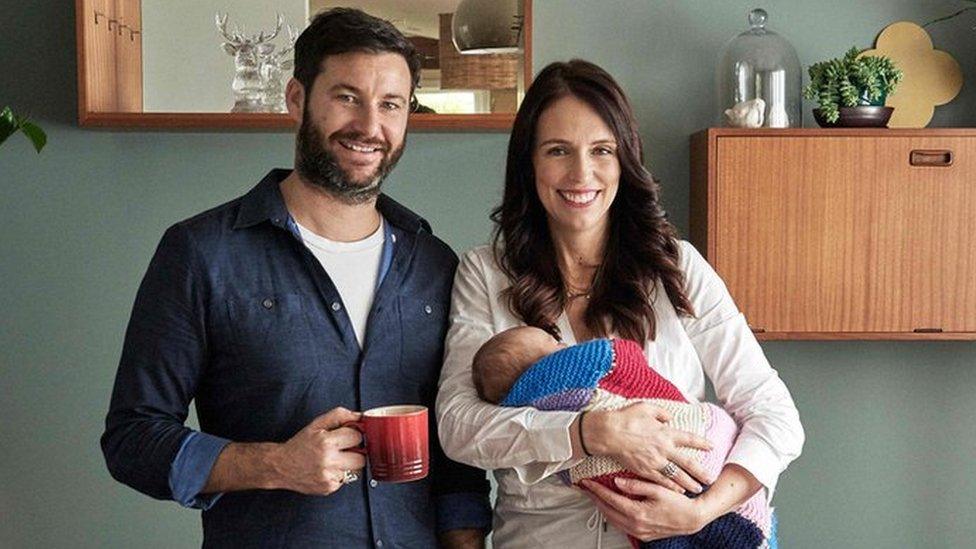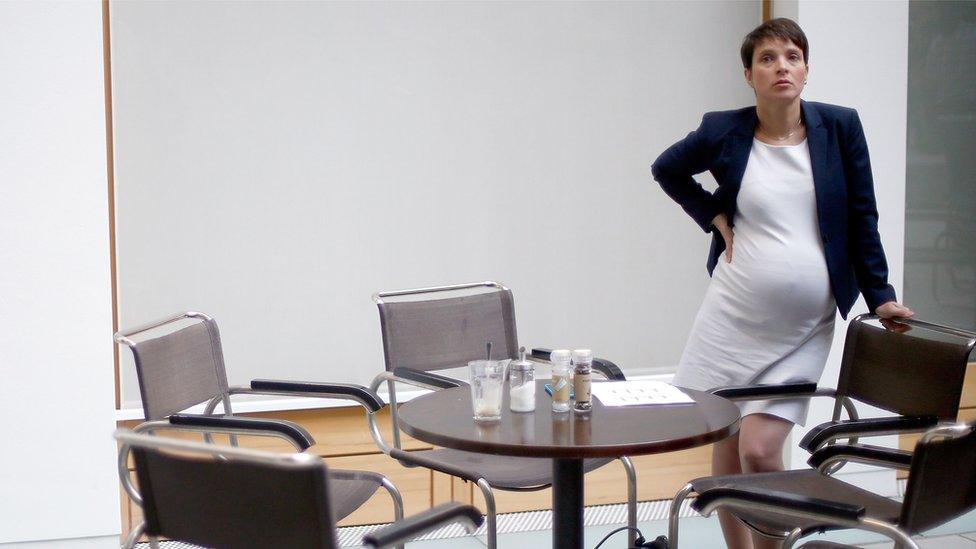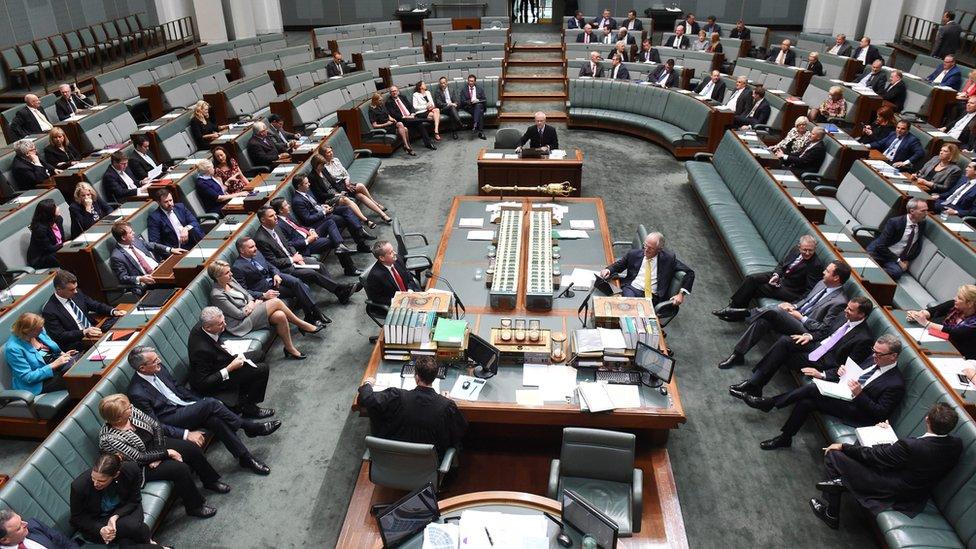New Zealand politician cycles to hospital to give birth
- Published

Ms Genter and her partner cycled to hospital where she would have their first child
New Zealand's minister for women has cycled to hospital to give birth to her first child at 42 weeks.
The Green Party's Julie Genter said she went by bicycle to be induced because "there wasn't enough space in the car".
She posted pictures on Instagram of her and her partner enjoying the "beautiful Sunday morning" ride.
In June, PM Jacinda Ardern became the second world leader to give birth in office. Both she and Ms Genter attended the public Auckland City Hospital.
Ms Genter, 38, also the country's associate transport minister, is a well-known and outspoken cycling advocate.
"This is it, wish us luck!" she wrote to her followers, adding: "My partner and I cycled because there wasn't enough room in the car for the support crew... but it also put me in the best possible mood!"
The journey using an electric bike was "mostly downhill", the keen cyclist said, joking: "Probably should have cycled more in the last few weeks to get the labour going!"
Allow Instagram content?
This article contains content provided by Instagram. We ask for your permission before anything is loaded, as they may be using cookies and other technologies. You may want to read Meta’s Instagram cookie policy, external and privacy policy, external before accepting. To view this content choose ‘accept and continue’.

The US-born Ms Genter had announced her pregnancy on Instagram, external, saying: "We're going to have to get an additional seat for the bikes."
The minister, who will take three months maternity leave, joins a number of politicians who have had babies while in office.
The first New Zealand member of parliament to give birth was in 1970, with another politician breastfeeding at work in 1983.
Australia changed its rules in 2016 to allow lawmakers to breastfeed and bottle-feed while in the chamber of the House of Representatives.
In recent years, Swedish and Italian members of the European Parliament have caught the world's attention for voting with their babies in arm.
Allow X content?
This article contains content provided by X. We ask for your permission before anything is loaded, as they may be using cookies and other technologies. You may want to read X’s cookie policy, external and privacy policy, external before accepting. To view this content choose ‘accept and continue’.

- Published2 August 2018

- Published21 June 2018

- Published1 February 2018

- Published28 August 2017

- Published2 August 2017

- Published1 June 2017

- Published2 February 2016

- Published23 September 2010